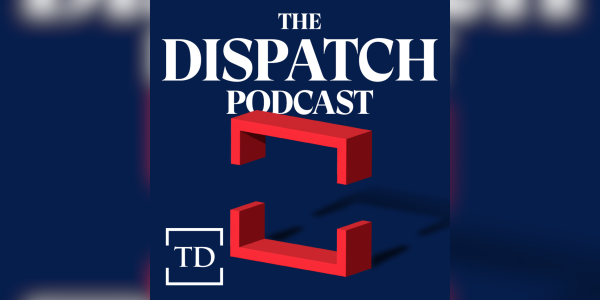I have three great loves in my life: my family, soccer, and the American dream. So as a naturalized citizen and a defender of an aspirational vision for the United States, I was predictably excited to read Ours Was the Shining Future: The Rise and Fall of the American Dream, the new book by New York Times columnist and Pulitzer Prize winner David Leonhardt.
For him, the American dream is held up by three main pillars: power, investment, and culture. Power refers mainly to the battles between political factions, the scuffles between unions, corporations, and policymakers. Leonhardt worries about crony capitalism and money in politics, and prefers an even stronger role for public entities and government leaders to remedy both. Though he recognizes the importance of markets and private investment, he also focuses more on government investments in public services, infrastructure, and the like. He does something similar for culture; the book’s discussion mostly focuses on how the government can influence culture, rather than how private initiative and human ingenuity can shape it.
Leonhardt cares deeply about the American dream and understands how crucial it is for the future of the country. He recognizes how it has invigorated the country’s historic pursuit of happiness, while also acknowledging many of the issues that are plaguing it (ex: complacency, cronyism, and a lack of competition). Ours Was the Shining Future aspires to rekindle what the writer James Truslow Adams defined eloquently in his 1931 book, The Epic of America: “The dream of a land in which life should be better and richer and fuller for every man, with opportunity for each according to his ability or achievement.”
But Leonhardt largely misses where the American dream stands today. In particular, I worry that Ours Was the Shining Future relies on four myths of the American dream which together downplay its promises and possibilities today.
The first myth is that the American dream is, quite bluntly, dead. That’s the premise of the book’s title—ours was the dream, in the past tense. But Leonhardt ignores present attitudes about the American dream. That’s something my organization has tried to do, resulting in a much more optimistic picture.
Our 2023 survey on the American dream found that three in four Americans think they have either achieved or are on their way to achieving it. That’s not an outlier. In 2022, 82 percent of respondents said they thought the American dream was alive and well. Our surveys go back to 2020 with similar results across age, race, income, and educational levels. Organizations like Pew and Gallup have had similar findings. And when respondents are asked about opportunities for their kids, results are similarly encouraging.
The second myth is that the American dream is only about material wealth. Ours Was the Shining Future goes to great lengths to focus on how that and income mobility are the American dream’s most important requirements. Leonhardt cites the important work of Harvard’s Raj Chetty, which shows a bleak picture of upward economic mobility: According to Chetty, there’s been a steep decline since the 1940s of people ages 32-40 who out-earn their parents when they were that age.
But Chetty’s work has since been challenged by scholars like Scott Winship, who show that the decline, though not unfounded, is overstated. While Leonhardt and Chetty focus on how declining or stagnant income mobility has been caused by rising inequality levels, Winship argues that reduced economic growth better explains disappointing upward mobility.
And there’s an even more important question to ask: Is the American dream really about out-earning your parents? Even though this can point to generational improvements, few probably wake up in the morning thinking they want to do better than their mom and dad. Moreover, the American dream focuses more on aspirations, not material circumstances. When asked about how essential different factors are to achieving the American dream, more people mentioned the freedom of choice on how to live and having a good family life (80 percent of respondents) is essential, compared to owning a home (44 percent) and being wealthy (13 percent).
The third myth is that the American dream is in decline because there are fewer unions and fewer government interventions in the economy. Leonhardt provides the history of American unions, and concludes that the Progressive and New Deal eras shaped our economy and institutions for the better. But he’s far too sanguine about unions at the time.
Research summarized by economist Adam Millsap shows that rust belt states with higher union membership after World War II suffered from serious setbacks. These included increased costs that reduced competition; stifled international competitiveness of the unionized sectors and businesses; reduced competition in labor that led to many people leaving the rust belt states where most manufacturing jobs were concentrated; and a long-run reduction in innovation and productivity. Millsap has also shown that workers in right-to-work states—where many sought opportunities—had greater life satisfaction.
If the American dream has stagnated or declined, it’s precisely because we have become more complacent, more focused on economic security instead of dynamism. There are more barriers to entrepreneurship and the American dream because of more regulation, not less.
Take the increase of occupational licensing requirements in the country. Back in the 1950s only one in 20 jobs required a license; nowadays, it’s more like one in four jobs. Likewise, academics like John Haltiwanger and Ufuk Akcigit, as well as the great work of the Economic Innovation Group, have tracked the considerable decrease in business dynamism since the 1970s—which is also when Leonhardt claims the U.S. had rampant deregulation and things started going downhill.
And lastly, the fourth myth about the American dream is that it is out of your control. Leonhardt rightly notes the role that policy and politics can play to lead to better, richer, and fuller lives. His book, however, focuses narrowly on political and elite culture, on big institutions like government bureaucracies or entrenched special interest groups, and on intractable structural problems created and affected by those institutions. But culture can also matter to the American dream in spite of politics and policy. Living a better, richer, and fuller existence requires taking action and being an architect of your own life.
Agency and the American dream go hand in hand. The capacity that people think they have to control and shape their own futures, despite adversity, is essential. If we continue presenting the idea that the American dream is something that happens to you because of the external forces of corporations, governments, unions, and the like, we rob the United States of the magic of this unique national ethos.
That ethos is such a national treasure precisely because we have so many examples of amazing stories of pursuit of happiness and flourishing and people overcoming barriers, regardless of where they started. Forsaking those stories to instead focus on unions, politicians, and intellectuals is one of the greatest oversights of Leonhardt’s book.
Take the example of Madam C.J. Walker who, despite being born to recently freed slaves, empowered and inspired many by becoming the first self-made woman millionaire. Or take the black titan Arthur G. Gaston, who achieved entrepreneurial greatness in the South and led successful companies—from an insurance company, to a motel, to a business college—all while supporting the civil rights movement.
We can also talk about Sam Walton, Walmart’s founder, and how he created the world’s largest employer through hard work, perseverance, and understanding what customers want. Or about Doug McMillon, Walmart’s current CEO, who got his start at the company unloading trucks and then made it all the way to the top.
Speaking of better lives, look at the story of the recent Nobel laureate in medicine Katalin Kariko. She overcame her own university disparaging her efforts and has now won one of the most prestigious awards in the world by leading to the development of mRNA vaccines that played a pivotal role in ending the COVID-19 pandemic. And outside of the for-profit sector, look at Boyan Slat, founder of The Ocean Cleanup. When many peers started marching to discontinue paper straws and plastic bags, Slat pursued a dream to build machines that are cleaning up the oceans as we speak.
We shouldn’t choose just one success story to focus on. Especially when many Americans think we are not living richer, better, or fuller lives, it’s time to look for models that will help reinvigorate a belief in the American dream.
Leonhardt highlights the importance of culture for the American dream, but there’s a distinction to be drawn between that and a culture of the American dream. The latter is in and of itself a powerful cultural attitude to build a better future; it’s a cultural attitude based on a dynamic, creative, and agency-driven narrative. The United States has followed a redemptive arc, on many fronts, that has made the country better, and it is ever improving in its promise to achieve equality of opportunity for all.
What Ours Was the Shining Future shows, perhaps inadvertently, is that things have been worse in the past. Yet there is a consistent hope, fueled by the American dream, that the future can be better. Contrary to the main premise of the book, the American dream still is a shining light for the country and its people.







Please note that we at The Dispatch hold ourselves, our work, and our commenters to a higher standard than other places on the internet. We welcome comments that foster genuine debate or discussion—including comments critical of us or our work—but responses that include ad hominem attacks on fellow Dispatch members or are intended to stoke fear and anger may be moderated.
With your membership, you only have the ability to comment on The Morning Dispatch articles. Consider upgrading to join the conversation everywhere.